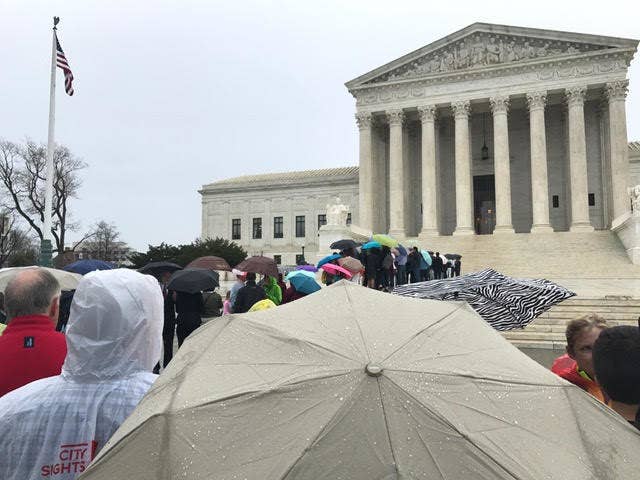
WASHINGTON — The Supreme Court on Tuesday tossed out Texas' standards for determining intellectual disability in death penalty cases, holding that the "medical community's current standards" limit how states can apply the court's ban on executing intellectually disabled people.
In the case of Bobby James Moore, the Supreme Court, in a 5-3 decision, rejected the standards that Texas had used because they "deviated from prevailing clinical standards and from the older clinical standards the court claimed to apply."
A trial court in Texas had found in 2014 that Moore was intellectually disabled and, therefore, ineligible for the death penalty in connection with his conviction for a 1980 robbery and murder of a grocery store clerk. The Texas Court of Criminal Appeals rejected that ruling, determining that Moore was not intellectually disabled under the Texas standards.
Justice Ruth Bader Ginsburg, writing the decision for the court, held that the seven questions used by Texas — the so-called Briseño factors — "creat[e] an unacceptable risk that persons with intellectual disability will be executed."
As BuzzFeed News detailed in a report examining the Texas test in advance of the argument, medical experts criticized the factors because they rely upon specific abilities — such as whether the person can lie, and whether their crime required planning — to judge whether a person has a disability, rather than assessing every aspect of their adaptive behavior.
Experts told BuzzFeed News that the Briseño factors did not reflect modern clinical standards of disability. On Tuesday, the US Supreme Court agreed and held that those clinical standards constrain states' criminal law standards. All eight justices criticized the use of the Texas standards as "unacceptable," although the court was split 5-3 on the ultimate outcome in the case.
In rejecting the standards, Ginsburg wrote, "[T]he [appeals court] defined its objective as identifying the 'consensus of Texas citizens' on who 'should be exempted from the death penalty.'"
That, however, is not the law as detailed by the US Supreme Court, she continued.
"Mild levels of intellectual disability, although they may fall outside Texas citizens' consensus, nevertheless remain intellectual disabilities, and States may not execute anyone in 'the entire category of [intellectually disabled] offenders,'" she wrote for the court.
The Supreme Court had declared intellectually disabled people ineligible for the death penalty back in 2002. The justices followed up on that opinion in 2014 with a further ruling that limited states from applying a strict IQ-point cutoff in determining who is to be considered intellectually disabled.
Tuesday's decision strengthens the effect of those rulings, making clear that "[t]he medical community’s current standards supply one constraint on States’ leeway in this area."
As to Moore specifically, vacates the prior decision of the Texas Court of Criminal Appeals upholding Moore's death sentence and sends it back to the state court for further consideration in light of Tuesday's decision.
Chief Justice John Roberts agreed that the Briseño factors are "an unacceptable method of enforcing the guarantee of [the 2002 decision]." Nonetheless, he dissented from the court's decision, writing that he disagreed that the Texas appeals court "erred as to Moore’s intellectual functioning." Roberts concluded that was an independent reason to uphold the Texas court's decision that Moore is eligible for execution.
Roberts was joined in his dissent by Justices Clarence Thomas and Samuel Alito.
The court had heard arguments in the case in late November 2016.
